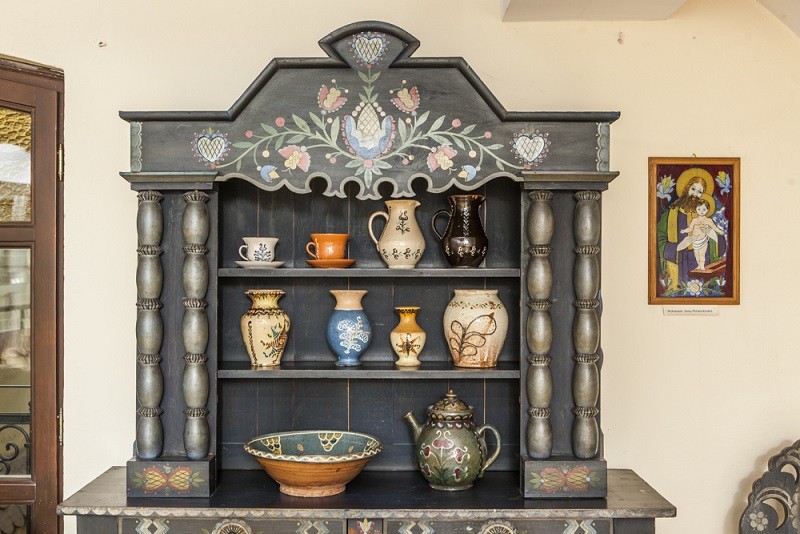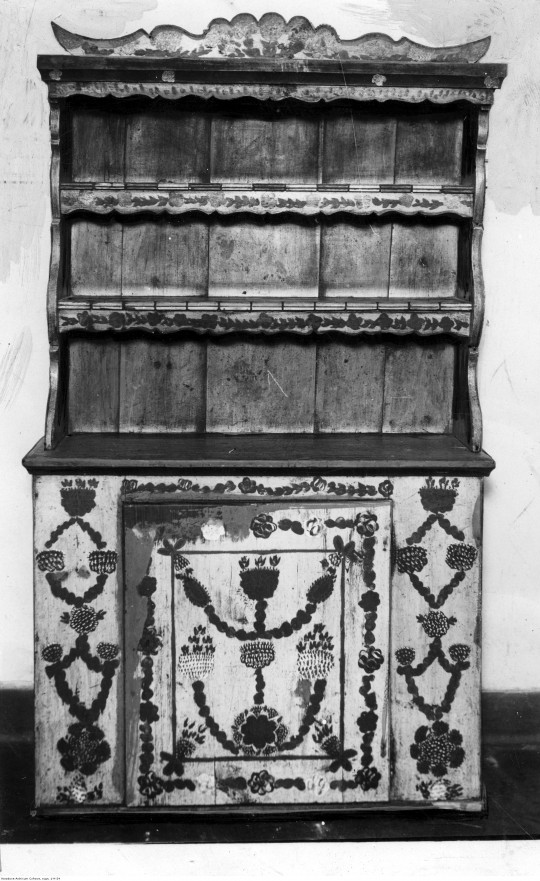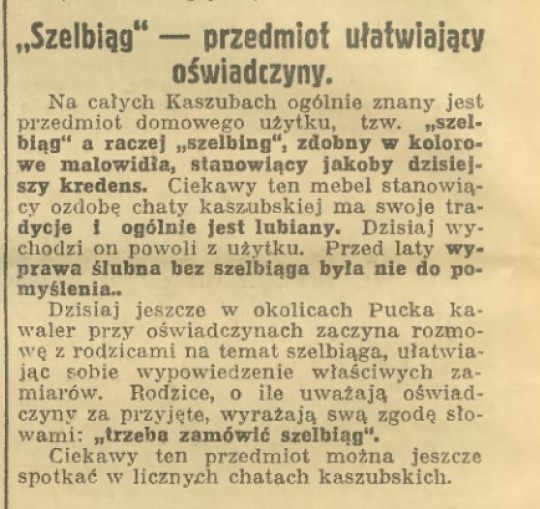The permanent ethnographic exhibition presented in one of the halls of the Kościerzyna Earth Museum contains items characteristic of the folk culture of Kashubia. Among them are carved-backed zydles, vessels woven from debarked pine roots, as well as wooden sculptures depicting fishermen and animals. However, the visitor's attention is stolen by an impressive credenza, whose function - as it turns out - goes beyond the obvious one associated with storage.
The szelbiąg (szelbing, szelbląg), as this type of furniture is called in Kashubia, located in the Kościerzyna museum, was made by Teodor Pliński, a Kashubian sculptor born in 1907 in Czersk, a graduate of the Academy of Fine Arts in Krakow. The decorations in the form of paintings were made by his wife, Bronisława Plińska (née Wrycza), a Kashubian embroiderer. The artistic couple, the Plińskis, has permanently entered the history of the region - Bronisława became famous as a promoter of Kashubian embroidery, Teodor as a co-creator of, among others, the Wielewska Calvary.
The szelbiąg made by them consists of a cupboard and an upper attachment with a total height of about two meters. The lower part of the credenza is closed with double doors, above which there are two drawers. The top attachment - two shelves and decorative pillars on the sides - is crowned with a carved strip. The doors, fronts of the drawers, the edge of the cupboard, the bases of the pillars of the attachment, and the front of the crowning strip have been painted blue and decorated with motifs of Kashubian design.
In literature on Kashubia, there are numerous mentions of the szelbiąg as an element of home equipment. In the 1930s, Friedrich Lorentz wrote: Next to the chest stands a cupboard for ships (szelbiąg), consisting of a closed lower part, where food supplies are kept, and an open spice rack with sometimes twisted columns, where colorful plates are placed and beautifully polished pewter spoons are hung. The szelbiąg is also richly decorated with paintings. Painted sideboards were also popular in Kociewie - they were called szelbungami or szelblungami. They differed from the Kashubian ones in decorative motifs, but above all in the lack of columns.
As some sources indicate, the szelbiąg had a certain ritual significance when giving away a daughter in marriage. In the situation where the parents of the future bride agreed to the marriage with a given bachelor, they assured the "good husband", i.e., the matchmaker, that the szelbiąg would be ordered from the carpenter, which meant the final consent to the marital union. It was therefore a piece of furniture that facilitated proposals.
Location: Wiele
Date of creation: 1942/1943 (the years of the furniture's creation were determined by the daughter of the creator)
Author's name: Teodor Pliński (carpentry), Bronisława Plińska (paintings)
Characteristic features: szelbiąg consisting of a cupboard and an attachment, dimensions: cupboard: 140x90x42 cm, attachment: 127x112x33 cm, made of hardwood; cupboard composed of double doors, above which two drawers are placed; attachment with two shelves with decorative pillars on the sides (two on each side) and a crowning strip; the doors, drawer fronts, cupboard edge, pillar bases of the attachment, and the front of the crowning strip have been painted blue and decorated with Kashubian design motifs.
Prepared by: Agnieszka Domańska
I would like to thank Ms. Jagna Bogdan, head of the Ethnographic Department of the Kościerzyna Earth Museum named after Dr. Jerzy Knyba, for sharing information about the exhibit.
Sources:
B. Grzędzicki, Chmielno, Kashubian-Pomeranian Association, Gdańsk 1980.
F. Lorentz, Outline of Kashubian Ethnography, Toruń 1934.
L. Malicki, Kociewie Folk Art, National Museum in Gdańsk, Gdańsk 1973.
https://wsercukaszub.blogspot.com/
"Bydgoszcz Daily", no. 70, 1937.



